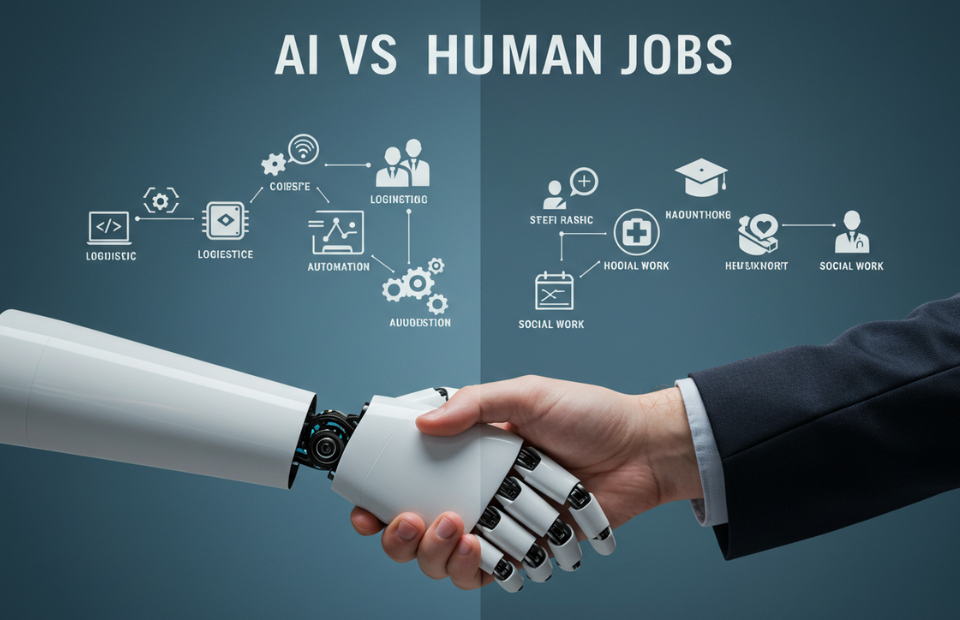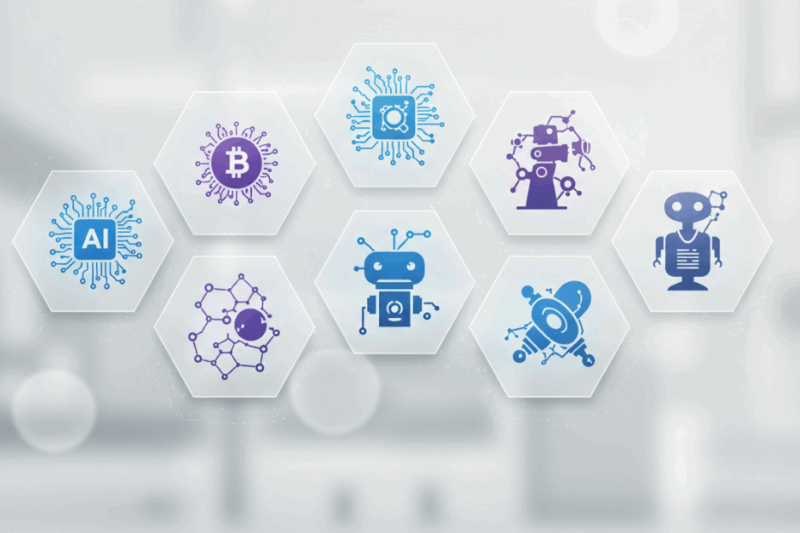The rapid advancement of artificial intelligence (AI) has sparked widespread discussions about its impact on the job market. From automation to machine learning, AI technologies are transforming industries and reshaping the way we work. While some fear that AI will lead to widespread job displacement, others argue that it will create new opportunities and enhance productivity. So, what does this mean for the future of human jobs? Let’s explore the key aspects of this evolving landscape.

The Rise of AI in the Workplace
AI is no longer a futuristic concept—it is already integrated into many aspects of our daily lives and workplaces. From chatbots providing customer service to algorithms optimizing supply chains, AI is being used to perform tasks that were once exclusively the domain of humans. Industries such as healthcare, finance, manufacturing, and retail are leveraging AI to streamline operations, reduce costs, and improve efficiency.
For example, in healthcare, AI-powered tools can analyze medical images, detect diseases at an early stage, and assist doctors in making accurate diagnoses. In finance, algorithms can process vast amounts of data to detect fraudulent transactions or predict market trends. These advancements highlight the potential of AI to complement human expertise and drive innovation.
Jobs at Risk of Automation
While AI offers numerous benefits, it also poses challenges for certain job sectors. Routine and repetitive tasks are particularly susceptible to automation. Jobs in manufacturing, data entry, and transportation are among those most at risk. For instance, self-driving vehicles could eventually replace truck drivers, and robotic systems can assemble products with greater precision and speed than human workers.
Even some white-collar jobs are not immune. AI tools capable of generating reports, analyzing data, or even writing content are becoming increasingly sophisticated. As a result, roles that involve repetitive cognitive tasks might also face significant disruption.
However, it’s important to note that automation does not necessarily mean complete job elimination. In many cases, AI can take over specific aspects of a role, allowing human workers to focus on more creative or strategic tasks. For example, journalists can use AI to gather data or generate initial drafts, freeing up time for investigative reporting or in-depth analysis.
Jobs That Are Safe (For Now)
While some jobs are at risk, others are less likely to be replaced by AI in the near future. Roles that require emotional intelligence, creativity, and complex problem-solving are difficult for machines to replicate. Professions such as teachers, psychologists, artists, and social workers rely heavily on human interaction and empathy—qualities that AI currently lacks.
Similarly, jobs in skilled trades like electricians, plumbers, and carpenters are relatively safe from automation due to the hands-on nature of the work and the need for adaptability in unpredictable environments. Leadership positions that involve decision-making and strategic thinking are also less likely to be fully automated.
The Creation of New Opportunities
One of the most promising aspects of AI is its potential to create new job opportunities. As AI technologies continue to evolve, demand for skilled professionals who can develop, implement, and maintain these systems is on the rise. Fields such as AI research, machine learning engineering, data science, and cybersecurity are experiencing significant growth.
Moreover, new industries and roles are emerging as a result of AI innovation. For example, professionals specializing in ethical AI development or addressing algorithmic bias are becoming increasingly important. Similarly, roles focused on managing the relationship between humans and machines—such as AI trainers or human-AI interaction designers—are gaining traction.
Upskilling and Reskilling: Preparing for the Future
To thrive in an AI-driven world, workers must adapt by acquiring new skills and embracing lifelong learning. Upskilling and reskilling initiatives are crucial for ensuring that individuals remain competitive in the job market. Governments, educational institutions, and businesses all have a role to play in providing access to training programs and resources.
Skills such as critical thinking, creativity, adaptability, and digital literacy will be highly valuable in the future workforce. Additionally, familiarity with AI tools and technologies can give workers a competitive edge. For example, learning how to use data analytics platforms or understanding the basics of programming can open up new career opportunities.
Balancing Innovation with Responsibility
As we navigate the intersection of AI and human jobs, it is essential to strike a balance between embracing innovation and addressing its societal implications. Policymakers must consider measures to mitigate potential job displacement, such as implementing social safety nets or encouraging investment in sectors that create new employment opportunities.
Ethical considerations are also critical. Ensuring that AI systems are transparent, fair, and unbiased is essential for building trust and minimizing harm. Companies developing AI technologies must prioritize responsible practices and consider the broader impact of their innovations on society.
Conclusion
The debate over AI versus human jobs is complex and multifaceted. While AI has the potential to disrupt certain industries and roles, it also offers opportunities for growth, innovation, and improved quality of life. By focusing on upskilling, fostering creativity, and promoting ethical practices, we can harness the power of AI while ensuring a future where humans continue to play a vital role in the workforce.
Ultimately, AI should be seen as a tool that complements human capabilities rather than replaces them entirely. By embracing change and preparing for the challenges ahead, we can create a future where technology and humanity coexist harmoniously—and thrive together.


